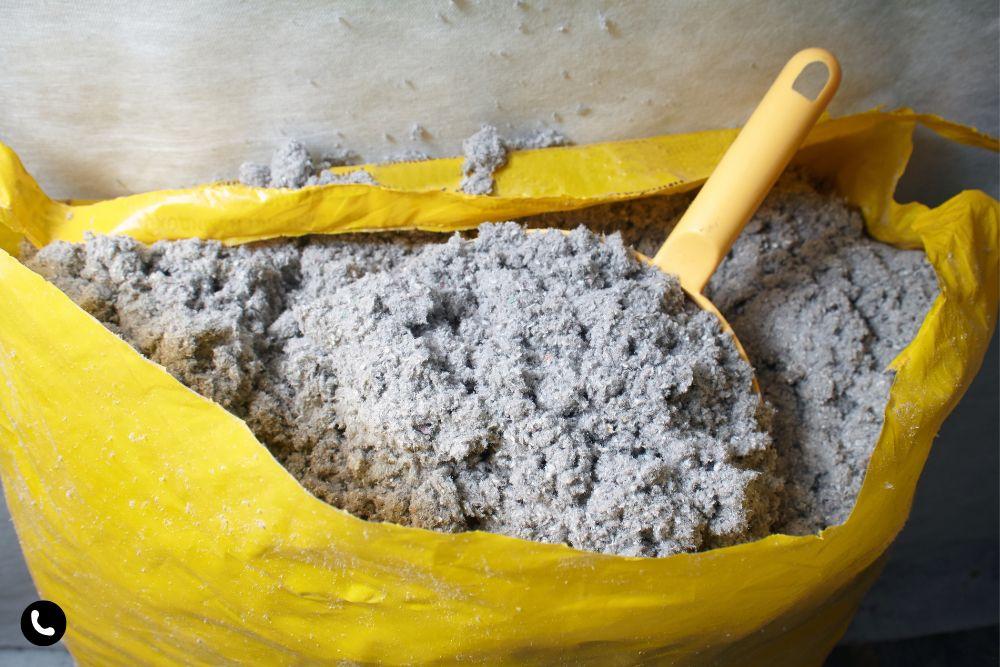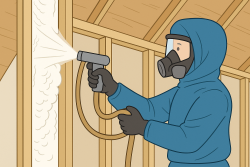When considering insulation for your home, many people focus on energy savings and sustainability. But what about mould? Mould is a sneaky problem that can cause more than unsightly stains—a potential health hazard. Homeowners often ask if cellulose insulation, praised for being eco-friendly and effective, also stands up to the challenge of mould prevention. The short answer is: it depends.
While cellulose insulation has some natural defences against mould growth, it's not foolproof. To truly understand whether cellulose insulation offers enough protection against mould, we need to look at how it works, what conditions make mould likely, and what you can do to safeguard your home.
What Makes Cellulose Insulation Different?
Typically, cellulose insulation is made from recycled paper products, like newsprint, and is treated with non-toxic fire retardants such as borates. This treatment enhances the insulation's resistance to fire, insects, and mould.
Borates create an environment that's hostile to mould spores by disrupting their ability to grow and spread. Additionally, cellulose insulation can manage moisture better than other insulation types by absorbing and releasing moisture without deteriorating, which can help prevent the conditions mould needs to thrive.
Key benefits of cellulose insulation that impact mould resistance include:
- Natural Mould Resistance: The borate treatment provides antifungal and antibacterial properties, making it more resistant to mould growth than other insulation types.
- Moisture Control: Cellulose can absorb moisture and release it into the environment when conditions are dry, reducing the likelihood of condensation build-up.
- Dense Coverage: When properly installed, cellulose insulation creates a thick barrier that minimizes air leaks and prevents moisture-laden air from entering insulated spaces.
However, even with these benefits, certain conditions can lead to mould growth if not properly managed.
Symptoms of Mould Growth on Cellulose Insulation
While cellulose insulation offers good mould resistance, it is not immune to mould under all circumstances. Here are some conditions where mould could develop:
- Excess Moisture Intrusion:Mould thrives in moist environments. If there is a persistent source of moisture—such as a leak in the roof, plumbing issues, or high humidity levels—cellulose insulation can become damp. Over time, even with its mould-resistant treatment, cellulose insulation can harbour mould if it remains wet for extended periods. Therefore, proper moisture management is critical.
- Improper Installation and Air Sealing:Incorrect installation can compromise the effectiveness of cellulose insulation. If not densely packed or gaps are left unsealed, moisture-laden air can enter the walls or attic spaces and condense. This trapped moisture creates ideal conditions for mould to grow. Ensuring proper installation with tight packing and thorough air sealing is essential to prevent mould issues.
- Lack of Adequate Ventilation:Areas such as attics, basements, and crawl spaces require proper ventilation to manage moisture levels effectively. Without sufficient airflow, moisture can accumulate, even with mold-resistant insulation like cellulose. Proper ventilation systems, such as vent fans or soffit vents, are crucial to keeping these spaces dry and mould-free.
- Sudden Temperature Changes:Condensation can occur when the temperature suddenly changes on cold surfaces, especially in poorly insulated areas. When warm, moist air meets a cold surface, it can cause water droplets to form, which can seep into the insulation. Proper insulation and air sealing reduce the risk of condensation by maintaining consistent indoor temperatures.
How to Enhance Mould Protection with Cellulose Insulation
To maximize the mold-resistant properties of cellulose insulation, consider the following best practices:
- Ensure Comprehensive Air Sealing:Before installing cellulose insulation, ensure all cracks, gaps, and potential entry points for moisture are adequately sealed. This reduces the risk of moisture infiltration and mould growth.
- Add Vapor Barriers Where Needed:In areas like basements or crawl spaces prone to high moisture levels, installing vapour barriers with cellulose insulation can provide additional protection against moisture and mould.
- Maintain Proper Ventilation:Ensure attics, crawl spaces, and other potentially damp areas are well-ventilated. This can include installing ridge vents, soffit vents, or mechanical ventilation systems to allow moist air to escape.
- Regular Inspections and Maintenance:Periodically check your insulation, especially after heavy rainstorms, snowmelt, or plumbing leaks. Promptly addressing any signs of moisture intrusion or mould can prevent it from spreading and causing damage.
- Professional Installation Matters:Hiring professional installers who understand the specific requirements for cellulose insulation can ensure that it is applied correctly and tightly enough to resist air and moisture penetration, reducing the risk of mould.
Conclusion: Is Cellulose Insulation Enough to Prevent Mold?
With its borate treatment and moisture management capabilities, cellulose insulation provides significant resistance against mould growth. However, it is not a one-size-fits-all solution. The effectiveness of cellulose insulation in preventing mould largely depends on proper installation, air sealing, moisture control, and ventilation.
By taking the proper precautions, homeowners can maximize the benefits of cellulose insulation and create a safer, more comfortable living environment.
At Reitzel Insulation, we specialize in professional cellulose insulation installation, ensuring the highest standards of safety and effectiveness. Contact us to learn how we can help protect your home against mould and improve energy efficiency.


















